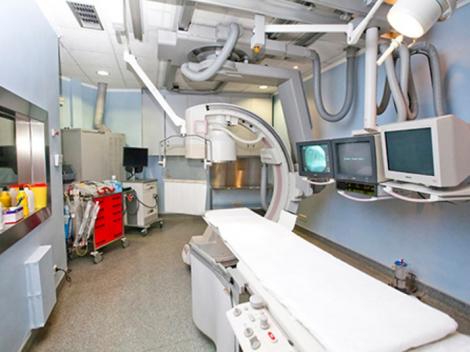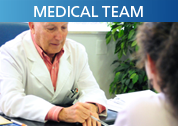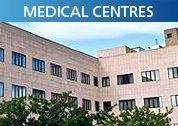
Specialized Centers
HOSPITAL CLÍNICA BENIDORM (HCB)
HOSPITAL INTERNACIONAL MEDIMAR
Aortic Aneurysm Repair
An aneurysm is a balloon-like bulge in an artery. An aneurysm occurs when the force of blood pushing against a section of weakened artery pushes the walls, forming a type of blister that may rupture and cause a fatal haemorrhage.
Aortic aneurysms can occur in the chest area (thoracic aneurysm) or in the abdomen (abdominal aneurysm).
Aortic aneurysm repair consists of replacing the weakened section of the artery with a synthetic tube (graft). In some cases, the aortic valve may require replacement.
Benefits of the operation
Aortic aneurysm repairs prevent rupture of the artery, which is a life-threatening condition.
Medical-technical description
The surgery to repair an aortic aneurysm depends on the size and location of the aneurysm and the patient's general condition. Chest aneurysms that involve the ascending aorta are generally operated on immediately. Descending and abdominal aortic aneurysms may be less dangerous. They should be watched if they reach more than five centimetres or cause symptoms, at which time surgery should be performed quickly to prevent rupture.
About the operation
Surgery is performed under general anaesthetic and takes between three and four hours. First of all, the chest is opened. If the aneurysm is in the ascending aorta an incision is made through the breastbone (median sternotomy), the heart is stopped, the heart muscle is protected and a heart-lung machine (extracorporeal circulation) is used. If the aneurysm involves the descending thoracic aorta, a thoracotomy (incision into the chest) is required.
After the surgery, the patient stays in the intensive care unit for one to two days, then for five to seven days on the ward. A cardiac rehabilitation plan is then started, and if the patient's work does not involve physical exertion, he or she can go back after between four and six weeks.
With the exception of emergencies, this kind of surgery can be scheduled.
Before the operation
- You will have blood and urine tests, a chest X-ray, electrocardiogram, echocardiogram, CAT scan, chest MRI and aortogram.
- You must tell the surgeon if you have symptoms of fever, shivering, cough or nasal secretions.
- You must stop taking drugs such as aspirin or any other antiaggregant drugs one week before the surgery.
- It is a good idea to make a list of all the medicines you take and bring it with you on the day you are admitted.
- If you smoke, you must stop smoking at least two weeks before undergoing surgery.
- When you have been admitted to hospital, you will be washed with antiseptic soap and the site of the surgery will be shaved.
- You must not eat or drink anything for 12 hours before the surgery.
Post-operative care
- You will have drains in your chest for between 24 and 48 hours.
- You will be given respiratory physiotherapy and cardiopulmonary rehabilitation.
- You must not stretch your arms out or lift any weights for four weeks.
- You must wash with antiseptic soap and dress the wounds every day.
- You must take aspirin for at least six weeks.
- If you are fitted with a mechanical valve, you will have to take anticoagulants for life and have regular coagulation tests to adjust the dose.
- If you are going to have an operation or dental surgery you should tell the doctor that you are on anticoagulant therapy and should take an antibiotic before the surgery to prevent bacterial endocarditis.
- You will be back to leading a normal life within approximately four weeks of the surgery.



